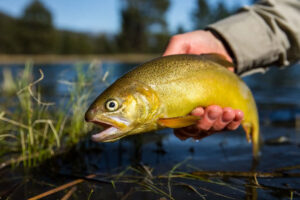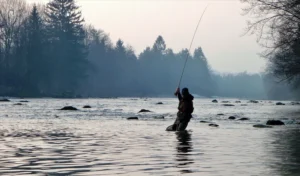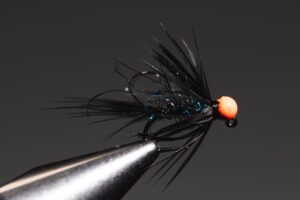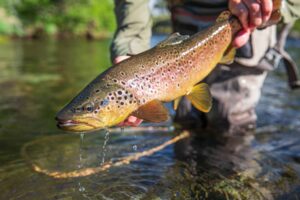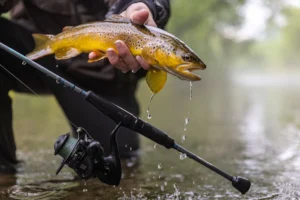Fly fishing may get all the glory when it comes to trout, but spin fishing is just as effective—and often more accessible—for anglers of all skill levels. Whether you’re hiking into a remote stream or casting from the bank of a stocked lake, spin fishing offers versatile and proven methods for catching trout. Here’s a breakdown of the top spin fishing techniques that consistently put trout in the net.
1. Inline Spinners
Inline spinners like the Panther Martin, Rooster Tail, and Mepps Aglia are trout-catching machines. Their rotating blades create flash and vibration, triggering aggressive strikes—especially from rainbows and browns.
Tips for success:
- Cast upstream and retrieve with the current.
- Use a steady retrieve with occasional twitches.
- Go with smaller sizes (1/32 to 1/8 oz) for wild or pressured fish.
2. Spoons
Spoons like the Kastmaster and Little Cleo are perfect for covering water and targeting deeper pools. Their fluttering action mimics a wounded baitfish, which big trout find hard to ignore.
When to use:
- In lakes or deep river runs.
- On windy days when casting distance is key.
- For targeting larger, more aggressive trout.
3. Soft Plastics
While not as traditional, small soft plastics—like curly tail grubs or minnow imitations—can be deadly, especially in slow-moving water or during winter months.
Rigging ideas:
- Pair with a 1/32 to 1/8 oz jig head.
- Use natural colors (white, olive, brown) in clear water.
- Fish slow and low, bouncing along the bottom.
4. Crankbaits and Jerkbaits
These lures imitate small fish and work especially well in lakes or bigger rivers. Trout will often hit crankbaits out of aggression or territorial behavior.
Best practices:
- Use smaller models (1.5–2 inches).
- Try suspending jerkbaits in spring and fall.
- Mix up your retrieve to trigger reaction bites.
5. Drift Fishing with Bait
Spin rods are ideal for presenting live or prepared bait. Worms, salmon eggs, PowerBait, and even corn can be deadly when drifted naturally through a pool or seam.
Gear suggestions:
- Use light line (2–6 lb test).
- Add split shot for weight.
- Let the bait flow with the current—natural presentation is everything.
6. Float Fishing
A float (or bobber) setup allows you to suspend bait or small jigs at a controlled depth, making it perfect for still water or slow-moving streams.
Why it works:
- Keeps your bait in the strike zone longer.
- Great for beginners or kids learning to fish.
- Useful when trout are holding off the bottom.
Bonus Tips for Spin Fishing Success
- Use Light Line: Trout are line-shy, especially in clear water. Stick with 2–6 lb test monofilament or fluorocarbon.
- Fish Early and Late: Trout are most active during low-light periods.
- Observe and Adapt: If you’re not getting bites, change lure color, size, or presentation before moving spots.
Final Thoughts
Spin fishing for trout is a versatile, affordable, and highly effective way to enjoy the sport. Whether you’re casting spinners into mountain streams or soaking bait in a calm lake, these techniques give you a serious edge. With a little patience and the right approach, you’ll be reeling in trout in no time.


